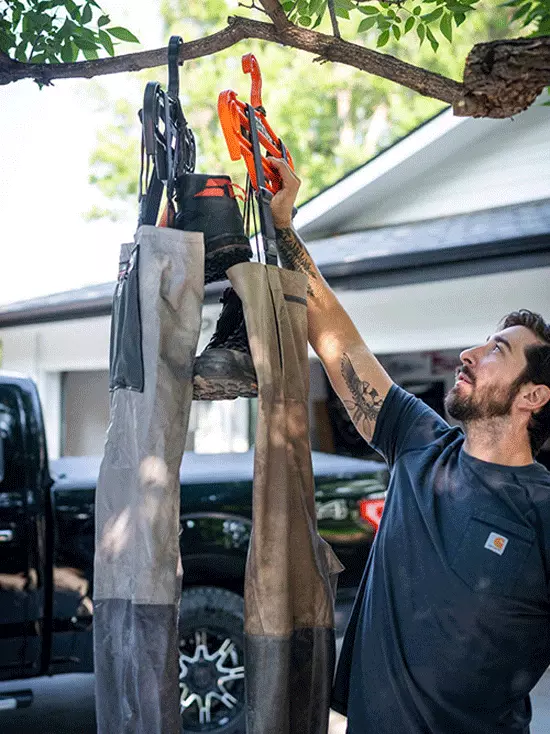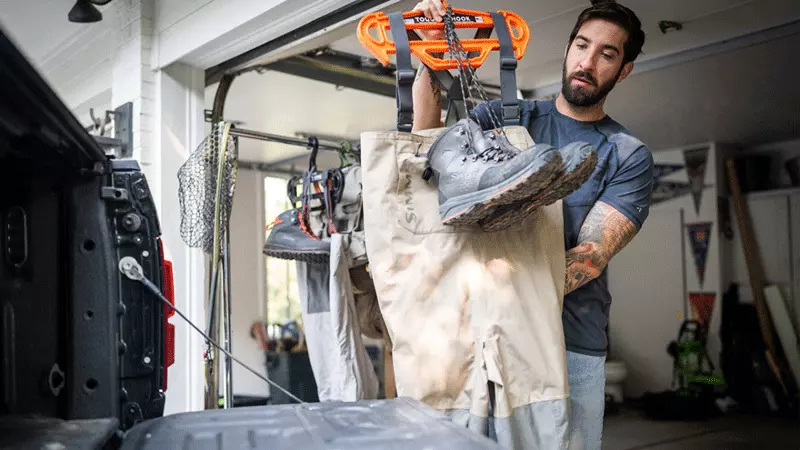In the world of fishing, waders are a true companion. They keep you dry during water adventures and help you maintain comfort and flexibility while casting your line. However, the durability of your waders heavily depends on how you treat them. Just like any gear, these, too, require some level of care to keep them functional and in good shape for years to come.
In this article, we will walk you through 8 essential tips to maximize the lifespan of your waders. We’ll cover everything from cleanliness and proper storage to damage prevention and repair. By following these guidelines, you can ensure your waders will serve you well during all your future angling escapades, and your investments in them will pay off.
Tips to extend the life of Waders
Dive into these insightful tips to help you extend the life of your beloved waders.[/vc_column_text][/vc_column][/vc_row]
1. Maintain Wader Cleanliness
An essential factor in prolonging the service life of your waders is cleanliness. Cleanse them of any earth, sand, or small particles that might cling to them after every use. Such elements can gradually degrade the fabric, making it thin and ripping. Wash your waders gently using a mild soap and lukewarm water, rinse them properly, and let them dry naturally.
2. Minimize Exposure to Sunlight
The sun’s ultraviolet (UV) rays can harm your waders’ material. Keep your waders in a cool, dry spot away from direct sunlight when not being used. If you need to dry them post an angling expedition, do it in a shaded area or inside your home.

3. Frequently Check Waders for Any Wear and Tear
Regularly examining your waders can help catch minor damage before it becomes big. Be on the lookout for tiny rips, pin-sized holes, or worn spots, particularly on the knees and seat parts that are more prone to wear out. Catching these early allows for swift repairs and prevents water from seeping in.
4. Fix Damages Promptly
If you spot any wear and tear, repair it immediately. Small holes or rips can typically be mended with a wader repair kit, which usually comprises patches and glue. Remember, it’s crucial to adhere to the guidelines provided by the manufacturer for an effective repair.
5. Store Waders in the Right Manner
Storing and maintaining your waders properly can greatly increase their durability. Don’t crumple or fold your waders; this could lead to folds that might eventually crack. Instead, hang them up in a cool, dry spot. For waders made of neoprene, roll them instead of hanging them to avoid unwarranted stretching.
Learn More About Dry and Wet Waders
6. Prevent Excessive Wear and Tear
Being cautious while wearing your waders can help minimize wear and tear. Steer clear of thorny shrubs or jagged rocks whenever feasible. Consider donning gravel guards or wading trousers to shield your waders from potential harm.
7. Use a Wader Bag
Investing in a top-quality wader bag can be beneficial. These bags are engineered to transport and store waders, protecting them from harm safely. Most come with ventilation compartments that let your waders breathe and dry out, reducing the possibility of mildew or mold.
8. Purchase Durable Waders
Though this might seem common sense, it’s vital to note that waders of superior quality are built to last longer. They are crafted from robust materials and are generally more wear and tear-resistant. In the long run, investing in a better pair of waders can help you save on replacements and repairs.
Getting to Know Your Wader’s Fabric
Be it nylon, rubber, Gore-Tex, or neoprene, every fabric comes with unique care instructions. For example, while Gore-Tex waders are known for their breathable nature and need specific attention to uphold their waterproof nature, neoprene variants are tailored for chillier settings and should be stored in a way to avoid them from becoming overstretched.
Swap Out Regularly
For passionate anglers who find themselves in the water often, think about having two sets of waders on hand. Alternating between them allows each set an opportunity to dry thoroughly, preventing undue wear on either.
Steer Clear of Aggressive Cleaners
It’s crucial to ensure your waders remain pristine, but it’s best to sidestep cleaners loaded with strong chemicals. These can erode the fabric’s strength, making it fragile or diminishing its water-resistant properties. A safer bet is choosing cleaning agents specifically made for waders, typically available at angling shops.
Reinforce Waterproofing
As time passes, the waterproof layer on some waders might start to thin out. Consider applying a waterproofing agent or mist suited for your wader’s fabric in such cases. This not only revives its ability to repel water but also breathes new life into the material, prolonging its usability.
In summary, taking great care of your waders is a simple task. It merely necessitates frequent cleaning, proper storage, and knowing how to handle them. Follow these eight tips to lengthen your waders’ life, guaranteeing that you remain dry and comfy during all your future angling escapades.
Frequently Asked Questions
What’s the right way to wash my waders without damaging them?
You can wash your waders using mild soap and lukewarm water. Cleanse them gently to remove any earth, sand, or small particles sticking to them. Rinse well and let them dry naturally. Please don’t use harsh chemicals or scrub too hard, as it could harm the material.
What kind of wear and tear should I look for during my regular wader check-up?
During your regular wader check-up, look for tiny rips, pin-sized holes, or worn spots, particularly in high-wear areas like the knees and seat. These minor damages can turn into big problems if ignored.
How do I store my waders properly to extend their service life?
When storing, it’s best to hang your waders in a cool, dry place away from direct sunlight to prevent UV ray damage. If your waders are made of neoprene, roll them instead of hanging them to avoid unwarranted stretching. Don’t crumple or fold your waders; this could lead to folds that might eventually crack.
Can I mend my worn-out waders, or do I have to get new ones?
Small holes or rips in your waders can often be mended using a wader repair kit, which usually comprises patches and glue. It’s crucial to fix any wear and tear to prevent worsening promptly. However, big damages might necessitate replacing your waders.
Why is it advisable to invest in a pair of high-quality waders?
High-quality waders are built with robust materials, making them more resistant to wear and tear. While they cost more initially, they can help save money in the long run as you’ll spend less on mending or replacing them. Investing in quality waders can also improve your comfort and angling experience.
How can I identify minor damages in my waders?
Regularly inspect for pin-sized holes, tiny rips, or worn areas, especially on high-contact regions like the knees.
What if I don’t have a wader repair kit?
While a repair kit is recommended, in a pinch, some anglers use waterproof sealants or patches for temporary fixes.

